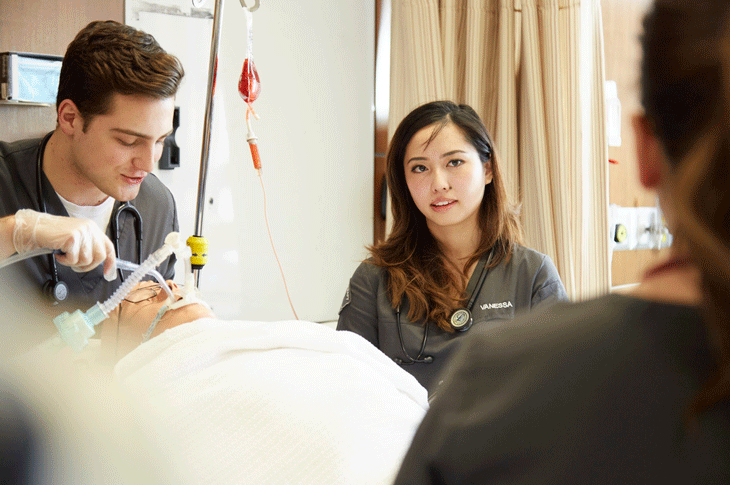Giving SAIT students the hands-on practice they need to save lives

The Parkland Institute’s recent report, Lights and Sirens: The Critical Condition of EMS in Alberta, states that “nearly every minute in Alberta, paramedics are called to a potential emergency that may require the use of medical and pharmaceutical interventions” and identifies the ongoing shortage of paramedics in the province as “a state of crisis”.
To alleviate the shortage, the Alberta Government has added 1,400 new seats in health-related programs including paramedical, across the province over the next three years. SAIT’s Primary Care Paramedic and Advanced Care Paramedic programs have the largest enrolment counts in Alberta, with more than 100 current students and that number is set to rise.
However, the effort to add seats will not solve the crisis on its own. To graduate from these programs, students must complete a practicum placement, and any hands-on training and experience they receive prior to these placements are crucial to their success. SAIT currently uses four adult, high-fidelity manikins, four ambulance simulation spaces, and manual stretchers for students from three different programs to recreate real-world situations.
Real-world practice, real-world solutions
A recent gift from the John Bowlen Legacy Flow Through Fund 2 at Calgary Foundation will see the addition of two new manikins, a training ambulance bay, and two power stretchers for students to train on.
“This generous donation through the John Bowlen Legacy Flow Through Fund 2 at Calgary Foundation will enhance our students' access to state-of-the-art simulation equipment, and elevate our ability to deliver programming that better aligns with real-world practice,” says Jimmy Joy, Academic Chair, Life Sciences Portfolio, SAIT’s School of Health & Public Safety.
This new equipment will provide invaluable experience to students and will help meet the government’s additional seat requirements for these programs. The major bottleneck in increasing seats in paramedic programs is the availability of practicum placements. Thanks to the new equipment provided by John Bowlen Legacy Flow Through Fund 2 at Calgary Foundation, students have the chance to prepare more extensively prior to, and then excel in, their placements.
Expanding experiences
The additional equipment ensures more students have more time to train in real-world situations, and this experience will be vital when they enter their practicums.
“Students will be better prepared for practicum and better equipped to launch into successful careers as paramedics at a time when the healthcare system in our province and across the country need them desperately,” says Joy.
As SAIT’s Respiratory Therapy program is also in the process of expanding its interprovincial seats to meet demand from Saskatchewan, the addition of this equipment is vital as it will be shared by an increasing number of students at SAIT.
Find out how you can make a difference in the lives of SAIT students and the communities they serve by donating to SAIT.

Oki, Âba wathtech, Danit'ada, Tawnshi, Hello.
SAIT is located on the traditional territories of the Niitsitapi (Blackfoot) and the people of Treaty 7 which includes the Siksika, the Piikani, the Kainai, the Tsuut’ina and the Îyârhe Nakoda of Bearspaw, Chiniki and Goodstoney.
We are situated in an area the Blackfoot tribes traditionally called Moh’kinsstis, where the Bow River meets the Elbow River. We now call it the city of Calgary, which is also home to the Métis Nation of Alberta.